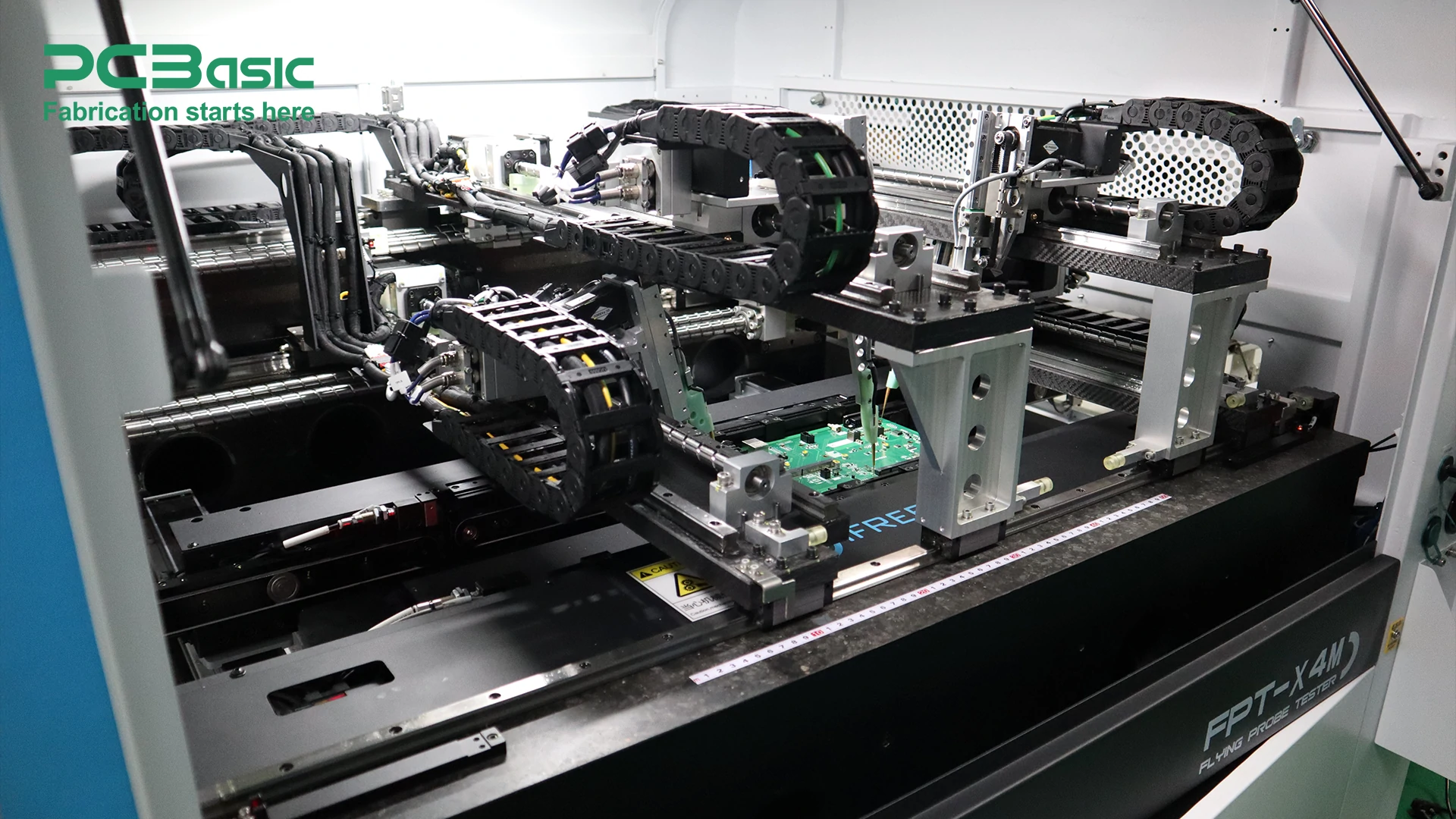Global high-mix volume high-speed Shenzhen PCBA manufacturer

Ru
9:00 -18:00, Mon. - Fri. (GMT+8)
9:00 -12:00, Sat. (GMT+8)
(Except Chinese public holidays)





Global high-mix volume high-speed Shenzhen PCBA manufacturer

Ru
9:00 -18:00, Mon. - Fri. (GMT+8)
9:00 -12:00, Sat. (GMT+8)
(Except Chinese public holidays)





HomePage > Blog > Knowledge Base > How the Flying Probe Tester Enhances PCBA Testing Efficiency?
No matter what type of manufacturing industry it is, both manufacturers and consumers have always been requiring the quality and reliability of their products. Hence, the phased testing part of the production process is an essential approach to the quality of the output. One of the testing methods to ensure electronic devices operate as designed is assembled printed circuit board (PCB) testing. Flying probe testing is one of the flight test methods available and is among the least expensive and fastest methods of testing for small to medium-sized PCBs and prototypes.
In order to improve the quality and efficiency of circuit board assembly and inspection, PCBasic recently introduced a flying probe tester, which significantly improves the speed and accuracy of product inspection.
In this blog post, let’s explore how flying probe testing works, its advantages, and how it can improve the efficiency of PCB inspection in PCB assembly.

Before understanding the advantages of flying probe testing, let's first address a basic question: What is flying probe testing? Flying probe testing is an efficient way to detect electrical faults on circuit boards. The flying probe tester moves through multiple probes on the printed circuit board to test various points on the PCB assembly and detect whether the board has electrical faults like open circuits, shorts or connection errors.
Since the flying probe tester directly contacts the test points with its probes, it does not require fixed fixtures, offering high flexibility and fast testing speed. As a result, flying probe testing has become increasingly popular in PCBA inspection.
As for testing, the flying probe tester has excellent advantages compared with other testing methods, and it is an important link in the PCBA test process because of its high flexibility and accuracy, fast detection speed, and high-cost effectiveness.
Perhaps the most significant benefit of flying probe testing is its great degree of flexibility and efficiency. Traditional ICT testing requires the production of specialized ICT fixtures for different circuit boards, which costs time and money.
In contrast, the flying probe machine does not require a custom fixture; only multiple flying probes are directly in contact with the circuit boards for detection, which can quickly adapt to different circuit boards. As a result, flying probe testing is cost-effective, making it an ideal solution for small-batch production, rapid adjustment and testing of different board dimensions.

Compared to other testing methods, the speed of the flying probe testing is also particularly outstanding. It can test various test points on the assembled PCB in a shorter time. Using multiple flying probes, the flying probe tester can test for electrical faults on multiple printed circuit boards at the same time, greatly reducing inspection time.
Moreover, the flying probe testing also significantly increases the accuracy of the circuit board testing. Flying probes are capable of testing the test points, with a significantly reduced risk of human error ensuring reliable results and measurement.
As we mentioned before, flying probe testing does not require a customed test fixture. When dealing with small batches, prototypes or rapid designs, a flying probe tester is a superior choice and is very cost-effective for low to medium batch production.
The flying probe tester conducts electrical testing at the PCB assembled testing stage without any fixture, detecting possible defects and issues in a short time cycle. It works seamlessly with other standard processes for PCB production, like soldering and assembly without adjustment or disruption to the process flow. This allows for tighter integration of production efficiencies and assurance of product quality consistency.
By the way, the flying probe tester has a high degree of adaptability. The flying probe tester is highly flexible. With the program and the flying probe, it is able to test different complicated circuit board. Testing is fast and precise, even for densely populated PCBs with irregular layouts.

The flying probe tester is a variable tool in the field of PCBA testing. Its cost-effectiveness, flexibility, and accuracy greatly surpass traditional PCBA testing and greatly improve the testing efficiency.
Through the introduction of a flying probe tester, PCBasic greatly improves production efficiency and product quality and constantly meets the needs of customers. Whether in high-volume production or customized small-batch production, PCBasic can provide you with the most reliable and efficient PCBA testing services to help your electronic products to market quickly and successfully pass quality inspection.

Assembly Enquiry
Instant Quote